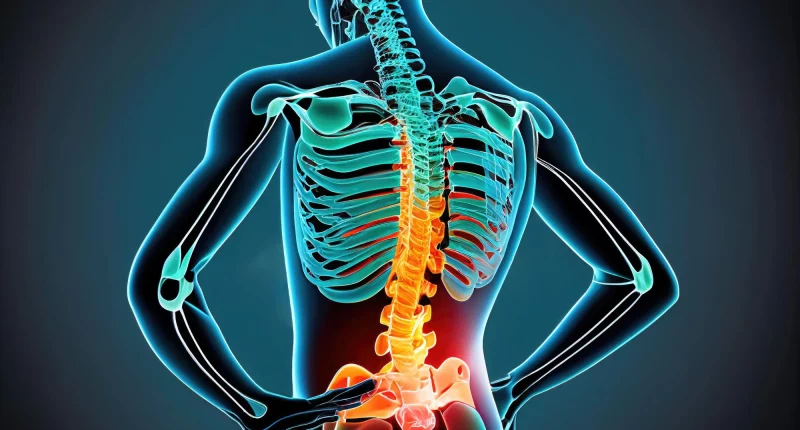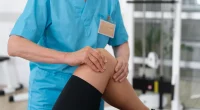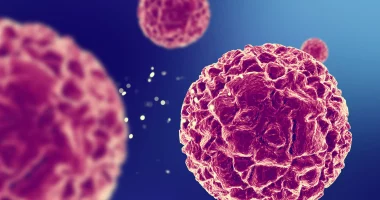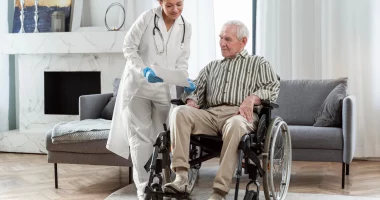Bamboo spine is a possible problem that can happen with ankylosing spondylitis, which is a long-term disease-causing inflammation. In the bamboo spine, the bones in the back fuse together, making them look like single long bones.
Normally, an adult’s spine is made up of 24 small bones called vertebrae. These vertebrae are stacked from the neck down to the lower back, shaping the spinal column. Each vertebra can move on its own, allowing the spine to be flexible. But in people with bamboo spine, these bones join together and become stiff, making it hard to move.
It usually happens only in severe cases of ankylosing spondylitis, and not everyone with ankylosing spondylitis will get it.
What is it?
Bamboo spine is a problem of ankylosing spondylitis, a long-lasting arthritis that causes inflammation in the spine and other parts of the body. This inflammation can sometimes lead to the bones of the spine to fuse together, forming one long, rigid bone.
The term “bamboo spine” is used because the fused spine looks like a long, ridged stick of bamboo. This condition leads to symptoms that can get worse over time. People with bamboo spines often experience decreased flexibility in their spine, trouble in movement, and back pain.
Causes
The bamboo spine grows because of a process called calcification. In ankylosing spondylitis, flare-ups cause inflammation in the tissues that link ligaments and tendons to bones. These tissues heal, but repeated cycles of inflammation and healing can cause scarring. Rather than forming healthy new tissue, the body may produce extra bone.
If this extra bone grows large enough, it can fuse with nearby bones, connecting them together. When this happens to the vertebrae in the spine, they lose their ability to move freely. Over time, if enough of these bones fuse, the spine becomes rigid and stiff, a condition known as bamboo spine.
Is Bamboo Spine inheritable?
The exact cause of ankylosing spondylitis is not fully understood, but genetics play a significant role. Many individuals with AS have a specific gene that scientists believe develops the chance of getting the condition. This gene forms a genetic marker known as HLA-B27. Some researchers estimate that up to 90% of people with ankylosing spondylitis have the HLA-B27 marker.
However, the Spondylitis Association of America notes that many people with the HLA-B27 marker never get ankylosing spondylitis. Scientists have discovered more than sixty other genes that are linked to ankylosing spondylitis and related diseases. Some of these genes include IL-12, IL-17, IL-23, and ERAP 1.
Diagnosis
To determine the bamboo spine, a healthcare provider will start with a physical test to assess the flexibility and shape of the spine. It can also disturb chest expansion, so the healthcare provider might ask the patient to inhale and exhale deeply to see if their chest expands normally.
The doctor will ask about symptoms and, if an individual doesn’t already have a diagnosis of ankylosing spondylitis, they can ask questions to find the condition. If there are signs of bamboo spine or ankylosing spondylitis, the doctor may suggest an X-ray. This helps them look for vertebrae that appear square and are closely spaced. An MRI scan might also be suggested for a clearer image of the spine.
Treatment
As stated by the Spondylitis Association of America, treatment for ankylosing spondylitis includes several approaches:
- Physical Therapy: Exercises to increase flexibility and strength.
- Medication: Nonsteroidal anti-inflammatory drugs or immunosuppressant drugs to decrease inflammation, stiffness, and pain.
- Cold and Hot Therapy: Applying heat or cold to affected areas to relieve pain.
- Posture Education: Learning proper posture to manage symptoms and prevent complications.
In several cases, if the pain is serious or if the person with ankylosing spondylitis cannot keep their head up, drink, or eat due to the shape of their spine, a healthcare provider may suggest surgery. Surgery might also be needed if the person has a spinal fracture that isn’t stable.
Surgical Options
- Spine Osteotomy: This procedure involves straightening and opening vertebrae. The surgeon can also put screws or rods to combine the remaining bones into a good position, a procedure called a spinal fusion.
- Hip Replacement: This means taking out the whole hip joint and putting in a prosthetic one made of materials like metal or plastic. Individuals who have had ankylosing spondylitis for a long time, typically from childhood, are more possible to require a hip replacement.
- Laminectomy: This includes eliminating an area of the spine called the lamina to produce more space for the spine to become straighter.
Osteoporosis is a normal complication of ankylosing spondylitis, so medication can also focus on maintaining bone strength to decrease the chance of fractures. Medications for osteoporosis may involve:
- Bisphosphonates: These help slow bone loss and maintain bone density.
- Parathyroid Hormone: This stimulates the formation of new bone cells.
- Selective Estrogen Receptor Modulators: These help to reduce the risk of fractures and maintain bone density.
Questions to inquire about a healthcare provider
When talking to a healthcare provider about ankylosing spondylitis or bamboo spine, you might want to ask these questions to better understand your condition and treatment options:
- Ask your doctor to assess your likelihood of developing a bamboo spine based on your current condition and medical history.
- Find out what steps you can take to reduce the risk of bamboo spine, including lifestyle changes, exercises, or medications.
- Inquire about the diagnostic tests available, such as physical examinations, X-rays, and MRI scans, to confirm if you have a bamboo spine.
- Learn about the different treatment options for AS and bamboo spine, including medications, physical therapy, and possible surgical interventions.
- Ask for advice on exercises, posture tips, and other home remedies that can help manage your symptoms and improve your quality of life.
- Discuss whether surgery might be necessary for your condition and what the potential benefits and risks are.
- Find out what you can do to minimize the chances of developing complications from AS or bamboo spine, such as maintaining bone health and monitoring for other related issues.
Summary
Bamboo spine, a complication of ankylosing spondylitis (AS), occurs when the spine’s bones fuse due to repeated inflammation and healing, leading to stiffness and reduced flexibility. Diagnosing the bamboo spine involves physical exams, chest expansion checks, symptom inquiries, and imaging tests like X-rays and MRIs.
Treatment includes physical therapy, medications, hot and cold therapy, posture education, and sometimes surgery. Genetic factors, including the HLA-B27 marker, play a significant role in AS risk. Patients should ask their doctors about their risks, prevention strategies, diagnostic tests, treatment options, home remedies, surgical candidacy, and ways to lower complication risks.









